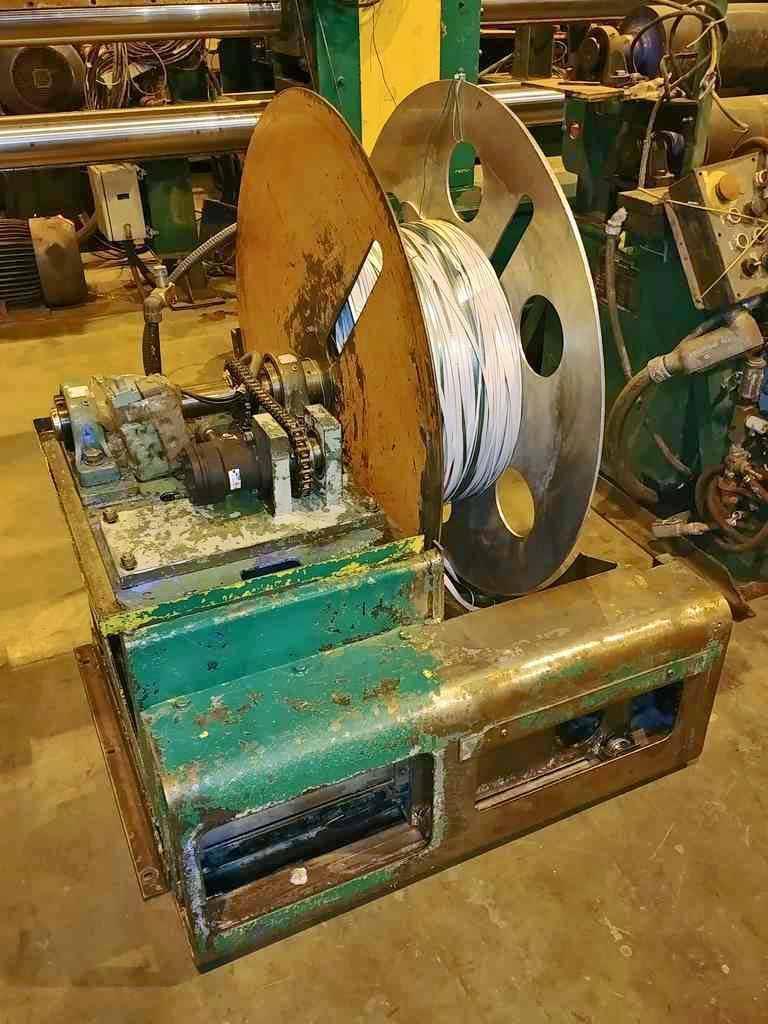
A scrap winder is a piece of equipment used in coil processing to handle and manage the scrap material (usually metal waste) generated during operations such as slitting, cutting, or rolling. The scrap winder’s primary function is to collect, wind, and store the scrap metal (often in the form of narrow strips or trim) in an organized manner, usually in the form of coils, so that it can be easily handled, transported, or recycled.
Key Functions of a Scrap Winder:
- Collection of Scrap Material:
- During processes like slitting, narrow strips of metal or scrap are produced. These scrap pieces are often unwieldy and need to be managed properly to avoid clutter and ensure a clean workspace.
- The scrap winder collects these scrap strips and efficiently winds them into coils, typically using a rotating spool or drum.
- Coiling the Scrap:
- The scrap winder winds the metal scrap into a tight, compact coil. This prevents the scrap from accumulating in a messy or hazardous manner, ensuring better safety and organization in the workspace.
- By winding the scrap into a coil, the scrap winder helps control the material’s shape, size, and ease of handling, making it easier to transport, store, or recycle.
- Minimizing Waste:
- By properly collecting and winding scrap, the scrap winder helps minimize waste by making it more efficient to collect and process for recycling. Many coil processing plants have systems in place to reuse metal scrap, either by selling it for scrap value or recycling it into new materials.
- The scrap winder ensures that scrap material is not lost and can be processed or sold.
- Improved Efficiency and Safety:
- A scrap winder helps maintain a clean working environment by neatly winding and storing scrap metal, which otherwise could create clutter on the shop floor.
- By controlling the scrap and keeping it contained in coils, the scrap winder also minimizes the risk of tripping or accidents caused by loose scrap metal.
- Automated Process:
- In some modern coil processing lines, the scrap winder is automated and can operate continuously, winding scrap material as it is produced. Automation of this process improves the overall efficiency of the coil processing line and reduces the need for manual labor to collect and manage scrap.
Design and Operation of a Scrap Winder:
- Scrap Handling Mechanism:
- The scrap winder typically uses a spool, drum, or rotating shaft around which the scrap metal is wound. The scrap material is pulled through the winder by a system of rollers, and the drum or shaft rotates to coil the scrap into a manageable form.
- Control Systems:
- The winder often includes a tension control system to ensure that the scrap is wound evenly and tightly. This prevents the coil from becoming too loose or too tight, ensuring efficient storage and handling.
- Collection System:
- Some systems incorporate a scrap chute or collection conveyor that collects the scrap directly from the slitting or cutting operation and feeds it to the winder.
- Recycling Capability:
- Scrap winders are typically designed to facilitate the recycling process by creating a clean, organized coil of scrap that can be transported to a scrap yard or recycling facility for further processing.
In summary, a scrap winder in coil processing plays a vital role in efficiently collecting and managing the scrap metal produced during manufacturing operations. It helps to wind the scrap into coils, improving the organization, safety, and recycling of waste material in the factory or plant.
At Galaxie Corporation, we offer a wide range of high-quality, pre-owned Scrap Winders and Scrap Choppers. Our team of experts is dedicated to helping you find the right equipment for your needs, backed by our commitment to excellent customer service.
Click here to check out our full inventory of our quality used machinery for sale.
Whether you’re upgrading your current steel processing line or adding new equipment to your line, Galaxie has the coil car to fit your needs. Contact Galaxie Corporation today to learn more about how our coil cars can enhance your production line, or if you have machinery to sell!
Go back
